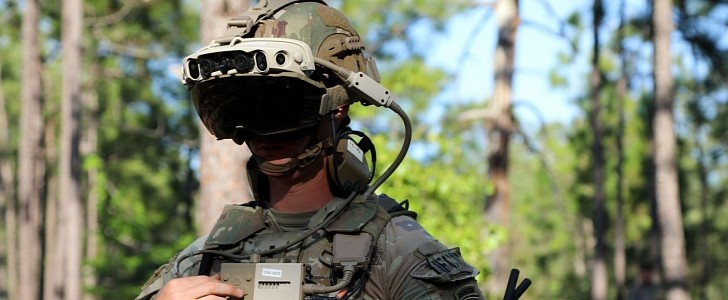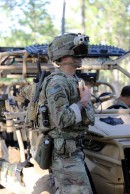The American soldiers have been testing new ways to help them gain more vision of their surroundings on the battlefield. As part of a collaborative program with Microsoft, the U.S. Army plans to start equipping its troops with HoloLens-based headsets this year in September. The devices will enable soldiers to see what's around them by projecting holographic images and 3D terrain maps just by clicking a button.
For over two years, the new technology has been tested and developed as part of a collaborative approach in which Microsoft has been working closely with the Army to better understand the environment and the conditions the devices must adapt to. Soldiers have tested several prototypes and provided feedback that was used to improve the devices.
Initially, the prototypes featured a HoloLens headset with cameras attached, eyewear with weights attached, and a variety of 3D-printed devices. While the devices were rugged, waterproof, and shockproof and had met the Army's standards, the headsets didn't allow soldiers to brace a rifle against their cheek.
According to the troops' feedback, the rim of the goggles also needed several adjustments in order to enhance peripheral vision. Since then, quite a few prototypes were developed and tested to meet the standards and provide the best version.
Testing proved to be so successful that the tech company was awarded a $21.88 billion contract in March to create more than 120,000 headsets. The devices, using what is called the Integrated Visual Augmentation System (IVAS), will allow soldiers to see through smoke and around corners, use holographic imagery for training, and have 3D terrain maps projected onto their field of vision at the click of a button.
IVAS could also be utilized in the future to allow soldiers to see what an environment looks like from various angles or in difficult-to-see weather conditions such as fog or rain.
According to Microsoft, the U.S. Army intends to start equipping soldiers with the headsets in September. While the military is still testing the gadgets, Master Sgt. Marc Krugh, a senior enlisted advisor who has worked on the project since its beginnings, believes that IVAS has already started to change how soldiers operate.
Recently, the devices were tested in Puerto Rico and Alaska to ensure that headsets function effectively in tropical and cold locations. The technology will be first used on foot, but experiments are already being conducted to allow soldiers to use them in military vehicles so they can view the environment even before stepping outside.
Initially, the prototypes featured a HoloLens headset with cameras attached, eyewear with weights attached, and a variety of 3D-printed devices. While the devices were rugged, waterproof, and shockproof and had met the Army's standards, the headsets didn't allow soldiers to brace a rifle against their cheek.
According to the troops' feedback, the rim of the goggles also needed several adjustments in order to enhance peripheral vision. Since then, quite a few prototypes were developed and tested to meet the standards and provide the best version.
Testing proved to be so successful that the tech company was awarded a $21.88 billion contract in March to create more than 120,000 headsets. The devices, using what is called the Integrated Visual Augmentation System (IVAS), will allow soldiers to see through smoke and around corners, use holographic imagery for training, and have 3D terrain maps projected onto their field of vision at the click of a button.
IVAS could also be utilized in the future to allow soldiers to see what an environment looks like from various angles or in difficult-to-see weather conditions such as fog or rain.
According to Microsoft, the U.S. Army intends to start equipping soldiers with the headsets in September. While the military is still testing the gadgets, Master Sgt. Marc Krugh, a senior enlisted advisor who has worked on the project since its beginnings, believes that IVAS has already started to change how soldiers operate.
Recently, the devices were tested in Puerto Rico and Alaska to ensure that headsets function effectively in tropical and cold locations. The technology will be first used on foot, but experiments are already being conducted to allow soldiers to use them in military vehicles so they can view the environment even before stepping outside.




